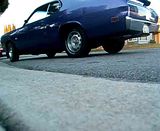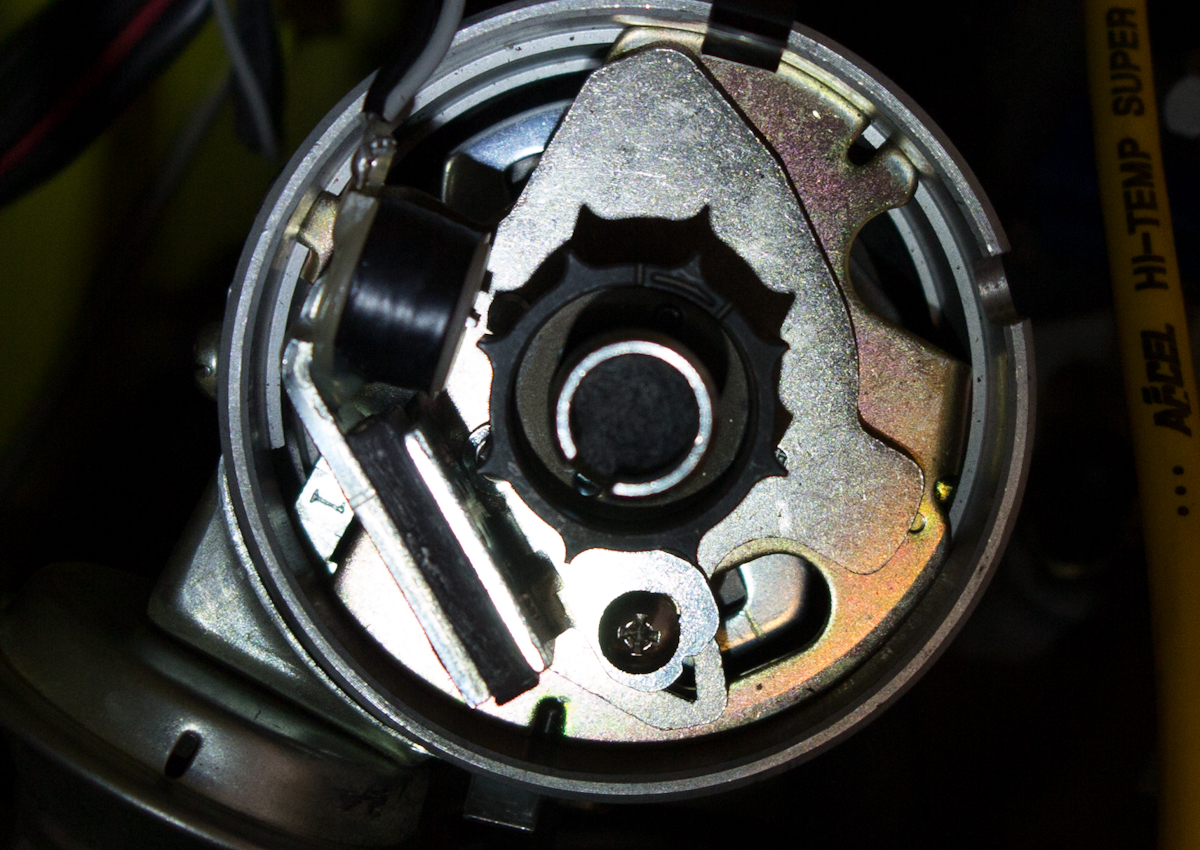....I'll have to google "rotor phase" .... .
"Rotor phasing" is simply the relationship between when the spark is triggered (points, pickup coil, and the ignition box) and the rotor contact position with the cap. If it's been "off for awhile" you can see "tracks" in the cap, IE the spark will have damaged the cap and tracked the inside up by the contacts.
This can be caused by things like a mis--match in parts in the distributor, some machining eff up, or maybe someone took, say, a stock dist. and eliminated the vacuum advance, getting the advance plate too far out of alignment.
AND IT CAN BE CAUSED by reversed pickup wires on a breakerless system
In a "normal" distributor, the rotor phasing does NOT change with changes in mechanical advance, because the reluctor (star wheel) or breaker points cam does not move in relation to the rotor.
The vacuum advance, however, DOES change rotor phasing, and this is NORMALLY taken care of by design.
You can easily check this, Google around, just cut/ break an old cap so that you can see the no1 (or actually any) plug tower contact through the hole you cut. Hook your timing light to whatever plug wire matches the hole you cut, and run the engine with the light directed at the hole. You can then SEE where the rotor is in relation to the cap. It should AT LEAST be "in contact" (alignment) so that the "corner" of the rotor contact is "mating" with the "corner" of the dist. contact. You should also move the vacuum advance if used, and the rotor should change over to the opposite "corners" of the contact.
Hole drilled in cap:
http://www.binderplanet.com/photopost/data/532/1534phasing_0047.JPG
Checkin' er
http://www.hotrodhotline.com/md/assets/images/Rotor_figure_2.jpg
Effect of der vacummin
http://www.hotrodhotline.com/md/assets/images/rotor_figure_4.jpg
Not all of what he says applies in your case, but this shows the rotor change
[ame="http://www.youtube.com/watch?v=aWMlNwGW0tM"]MSD Tech: Rotor Phasing - YouTube[/ame]
No valve adjustment .. I have stock, non-adjustable 360 valvetrain.
You should still check this out. All you had to do is mill the heads a little, and mill the block a little, and if using factory pushrods, you might not have enough clearance for the lifters
Ignition system is an MSD 6AL box .
Exactly what dist. are you using, IE Mopar breakerless, or MSD made for the 6AL box?
I read the destructions for the 6AL and 6AL-2. They MENTION different wiring for points, breakerless, and (for the 6AL-2) Hall effect, so you want to be CERTAIN that is correct
While this box does not have a selectible spark retard/ advance, IT IS microprocessor controlled. One has to wonder if "somethin' might go AFU" in these boxes?
The answer is, "I don't know" but I CAN tell you this----
Since you are having so much trouble, I'd substitute something else until you eliminate the problem.
If you have an old points dist, hook it up without the MSD
If you have a used/ working Mopar ECU, toss that temporarily on there
IF THIS WAS MINE I would temporarily "rig" a GM HEI module, which you can do in very little time, for very little money
Here's the diagram of mine, using a Mopar / Accell distributor:
You do need to screw it to flat metal for heat sink, and ground the mounting screws. The diagram shows proper polarity for the Mopar dist. connector. You can hook this thing up with 6 bucks worth of Radio Sh## clip leads!!!



















